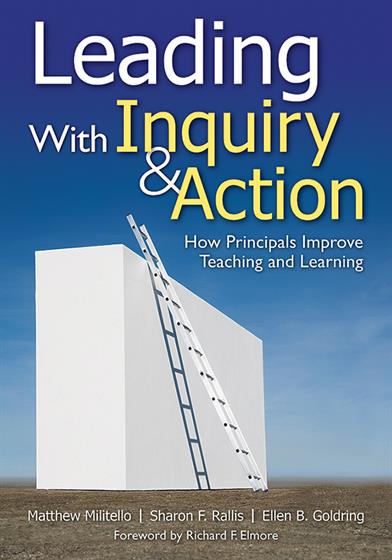Description
"This essential guide for educational leaders skillfully blends scholarship with practice and integrates theory with real-world examples. Through case studies, the authors show the reader how to develop, support, and improve a collaborative, inquiry-action process for improving teaching and learning. If we are going to have schools that successfully educate all students to high standards, then we need principals who translate the lessons of this book into practice."
—Andrew Lachman, Executive Director
Connecticut Center for School Change
Enhance learning with a collaborative, inquiry-based system of leadership!
With sociopolitical forces prompting calls for school improvement, school leaders look for ways to expand their expertise in instructional leadership and strengthen their role in shaping classroom practice.
Leading With Inquiry and Action presents a systematic, ongoing process for collecting information, making decisions, and taking action to improve instruction and raise student achievement. The authors illustrate this collaborative inquiry-action cycle with a running vignette of an experienced principal and offer questions and exercises to guide individual reflection and group discussion. Thoroughly grounded in research, this book helps administrators:
- Identify areas for instructional improvement
- Determine community-supported solutions and build stakeholder commitment
- Articulate an action plan based on multiple data sources
- Take steps that support teacher development
- Systematically evaluate program results
Educational improvement requires informed leadership. This practical guide provides an efficient and functional framework for transforming current or aspiring principals into inquiry-minded, action-oriented instructional leaders.
Key features
Introduces and shows how to implement a collaborative inquiry-action cycle, an ongoing system of practice that emphasizes both thought and action in addressing the challenges of school improvement and that includes identifying the practice problem, determining outcomes, articulating the action plan, taking action, and evaluating
Illustrates the collaborative inquiry-action cycle in action through a running vignette of an experienced principal
The 3 chapters of Part 2 offer cases, with charts, inventories, rubrics, and illustrations that provide models of how the cycle can actually be used in schools
Good for book study groups: at the end of each chapter questions and exercises serve to guide both individual reflection and group discussion




